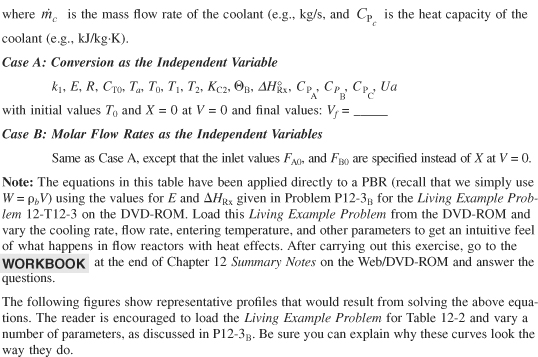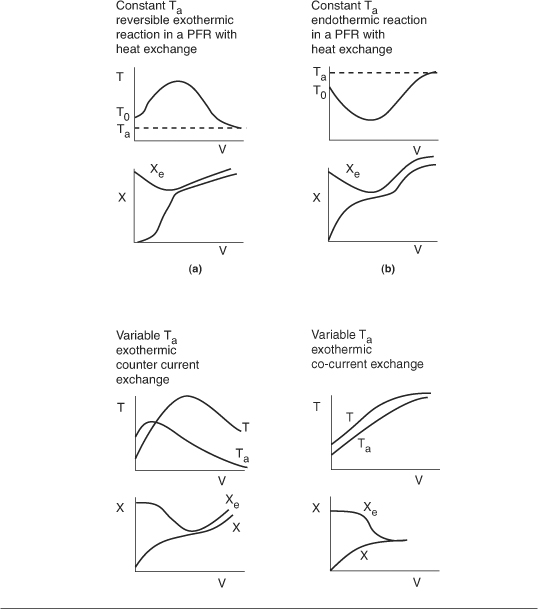12.2.2 Counter Current Flow
Here the reacting mixture and coolant flow in opposite directions for counter current flow of coolant and reactants. At the reactor entrance, V = 0, the reactants enter at temperature T0, and the coolant exits at temperature Ta2. At the end of the reactor, the reactants and products exit at temperature T, while the coolant enters at Ta0.
Figure 12-4. Counter current, double pipe heat exchanger.

Again we write an energy balance over a differential reactor volume to arrive at.

At the entrance V = 0 ∴ X = 0 and Ta = Ta2.
At the exit V = Vf ∴ Ta = Ta0.
We note that the only difference between Equations (12-10) and (12-11) is a minus sign [i.e., (T – Ta) vs. (Ta – T)].
Solution to a counter current flow problem to find the exit conversion and temperature requires a trial-and-error procedure.
Table 12-1. Procedure to Solve for the Exit Conditions for PFRs with Counter Current Heat Exchange
12.3 Algorithm for PFR/PBR Design with Heat Effects
We now have all the tools to solve reaction engineering problems involving heat effects in PFRs and PBRs for the cases of both constant and variable coolant temperatures.
Table 12-2 gives the algorithm for the design of PFRs and PBRs with heat exchange: In Case A Conversion is reaction variable and in Case B Molar Flow Rates are the reaction variables. The procedure in Case B must be used to analyze multiple reactions with heat effects.
Table 12-2. Algorithm for PFR/PBR Design with Heat Effects






